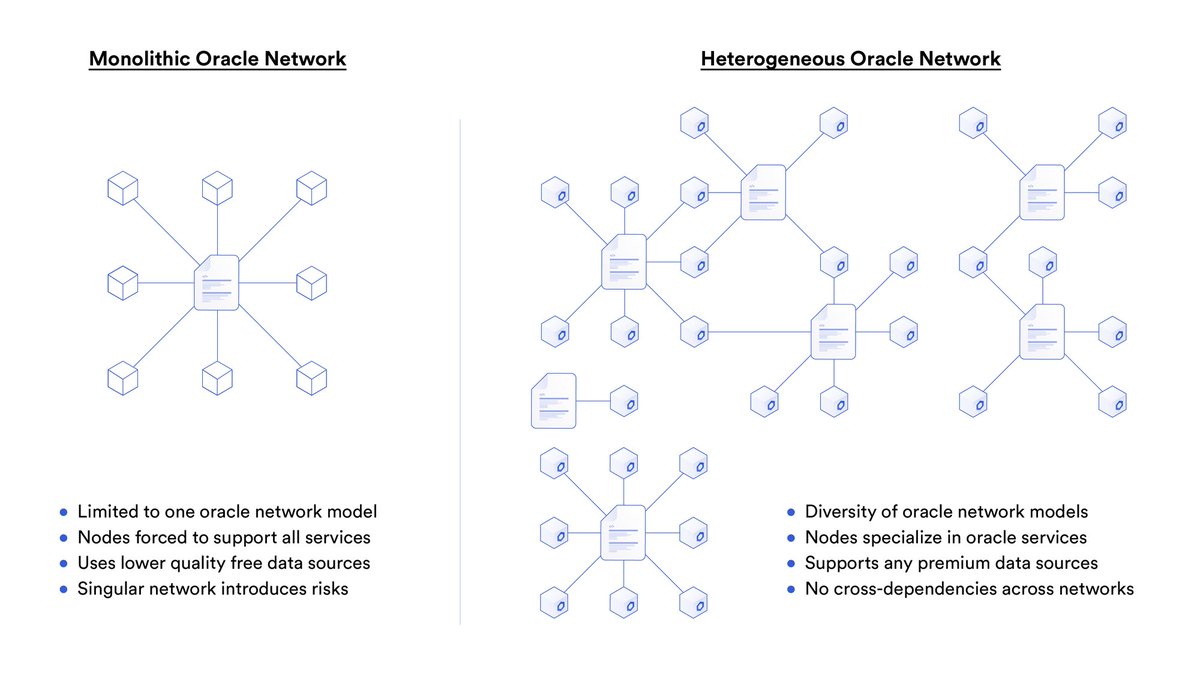1/ A summary of #Chainlink Labs Chief Scientist Ari Juels' talk on Fair Sequencing Services (FSS) at the @ethglobal HackMoney MEV Virtual Summit livestream
Shorter 15 minute presentation but got much more information on how FSS will roll-out into production
Shorter 15 minute presentation but got much more information on how FSS will roll-out into production
https://twitter.com/ChainLinkGod/status/1410660991793197065

2/ There are many different forms of MEV, some can be considered "good" like forms of arbitrage that makes markets more efficient and others "bad" like front-running which makes markets less efficient
The exact distinction between these types are still an open discussion
The exact distinction between these types are still an open discussion

3/ It's unlikely that all bad forms of MEV will be 100% eliminated, however tools can be built to enact more fair transaction policies for users to help significantly mitigate issues like higher fees
This is the fundamental goal of FSS
This is the fundamental goal of FSS

4/ The current model of transaction ordering is entirely centralized where the individual miner of a block can unilaterally decide which order transactions are processed by the network (usually by gas prices or an MEV auction)
Mempool -> miner -> block added to blockchain
Mempool -> miner -> block added to blockchain

5/ The impending model of transaction ordering is based on layer 2 rollups where the L2 system unilaterally decides how transactions are ordered
This can be centralized, but some L2s like @arbitrum are looking to decentralize the sequencing of transactions in a fair way
This can be centralized, but some L2s like @arbitrum are looking to decentralize the sequencing of transactions in a fair way

6/ In Fair Sequencing Services (FSS), the process of transaction ordering is decentralized to avoid the issues that centralization presents
Instead of a single entity, a committee of nodes determines the ordering of transactions off-chain
Instead of a single entity, a committee of nodes determines the ordering of transactions off-chain

7/ Decentralized oracles networks (@Chainlink) provide ready-made committees (providing the trust properties users desire) and already secure the Price Feeds used by the #DeFi ecosystem
Staking and cryptoeconomic guarantees can help provide the necessary assurances users need
Staking and cryptoeconomic guarantees can help provide the necessary assurances users need

8/ Reporting observed transaction ordering is a natural oracle functionality as oracles already observe off-chain behavior and collectively decide the value to convey on-chain (e.g. the price of a token)
In FSS, the off-chain behavior is the order of transaction transmission
In FSS, the off-chain behavior is the order of transaction transmission
9/ FSS Phase One will take the form of secure causal ordering, which means ordering encrypted transactions that are only decrypted after ordering is complete
Therefore, ordering is done before any committee node sees what the transaction is actually doing
Therefore, ordering is done before any committee node sees what the transaction is actually doing

10/ The key point is that you can't front-run what you can't see!
Limitations exist such as access to metadata (the account that submitted a transaction) and blind front-running (buying up an ICO before everyone else)
Secure casual ordering doesn't explicitly specify ordering
Limitations exist such as access to metadata (the account that submitted a transaction) and blind front-running (buying up an ICO before everyone else)
Secure casual ordering doesn't explicitly specify ordering

11/ FSS Phase Two extends this design further by adding the family of Aequitas ordering (consensus) protocols
Intuition: Aequitas orders transactions by the time received by a super-majority of committee nodes
A more efficient version of the Aequitas is coming in a ~month
Intuition: Aequitas orders transactions by the time received by a super-majority of committee nodes
A more efficient version of the Aequitas is coming in a ~month

12/ Aequitas prevents the metadata-based and blind front-running issues, though the design is more sensitive to network adversaries and more complicated to implement
Aequitas and secure casual ordering are complementary and hedge the limitations of each other nicely
Aequitas and secure casual ordering are complementary and hedge the limitations of each other nicely

13/ FSS works well for the preprocessing stage of the layer 1 where it can be implemented on a contract by contract basis
Ordering of txs will continue to move off-chain using different systems
FSS will likely be seen first ordering all transactions for a layer 2 system
Ordering of txs will continue to move off-chain using different systems
FSS will likely be seen first ordering all transactions for a layer 2 system

14/ More information on FSS can be found in the #Chainlink 2.0 whitepaper where it covers these concepts much more in-depth
research.chain.link/whitepaper-v2.…
A video recording of this presentation will likely be published onto Youtube soon as well
research.chain.link/whitepaper-v2.…
A video recording of this presentation will likely be published onto Youtube soon as well

• • •
Missing some Tweet in this thread? You can try to
force a refresh




















